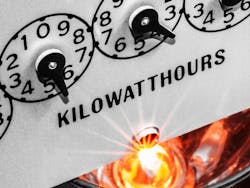The Sierra Club is urging New Jersey regulators to include microgrids as part of the state’s strategy for supporting energy efficiency and peak demand reduction.
The environmental group and others are also pushing the state to use energy storage to improve energy efficiency and peak demand cuts, according to comments filed with the New Jersey Board of Public Utilities (BPU).
At issue is a proposal to revamp the state’s efficiency and demand reduction programs released by the BPU in March. The proposal grew out of the New Jersey’s 2018 Clean Energy Act, which calls for overhauling the state’s power system and reducing greenhouse gas emissions.
The proposal includes recommendations on program design and administration, cost recovery mechanisms, performance targets and metrics, program performance reviews, the evaluation, measurement and verification of programs and program effects, and filing and reporting requirements.
However, some groups want the state to go further.
Energy efficiency and microgrids
“Now is the time to initiate an expansion of energy efficiency and peak demand programs to address managing electric services for microgrids and electric vehicle charging stations,” the Sierra Club said in comments filed this month.
Microgrids will be needed to fulfill the state’s energy master plan, which calls for replacing fossil-fueled power plants, heating systems and vehicles, according to the environmental group.
“The proliferation of microgrids is an opportunity to execute a smooth transition to the Clean Energy Grid resulting in cost savings to customers, a reduction in emissions, and more control
by consumers and grid operators to improve reliability and resiliency,” the Sierra Club said.
Expand on New Jersey town center concept
The environmental group called for a distributed energy resources microgrid program similar to the one the state initiated for town centers after Superstorm Sandy. This one should include town centers, commercial centers and industrial clusters, the group said.
Microgrids can be used by their hosts for peak shaving, demand response, and demand charge management, efforts undertaken to reduce the hosts energy costs. Their installation also sometimes goes hand-in-hand with energy efficiency upgrades at the host facility.
The BPU also should also include energy storage in its arsenal for cutting peak demand, the Sierra Club said, noting the state aims to have 600 MW of energy storage by next year and 2,000 MW
by 2030. The group sees opportunity to bolster behind-the-meter energy efficiency through on-site energy storage.
The microgrid program should integrate grid scale energy storage as well as behind the meter energy storage, the group said.
Integrate BYOD
SunRun, a rooftop solar company, also called for energy storage to be part of the energy efficiency plan.
The company wants the state to include “bring-your-own-device” programs that aggregate customer-sited energy storage assets to reduce peak load when needed.
BYOD programs could spur the storage market in New Jersey, according to SunRun.
“These programs encourage firms to enter new markets and make diverse financing options available to customers to make more customer adoption options available regardless of income classes,” the company said. “Including a BYOD program as a required core offering of utilities peak reduction programs could play a substantial role in achieving peak reduction goals, and offers an additional pathway to enhance the competitive storage market and expand access to
storage to low- and moderate-income residents.”
By cybrain/Shutterstock.com
Clean Energy Group, an advocacy organization based in Montpelier, Vermont, also urged the BPU to include energy storage in its efficiency plan.
An aggregated battery program offered through a state energy efficiency plan provides many benefits over a customer demand charge management model, according to CEG. Mainly, it allows for better alignment of behind-the-meter load reduction with regional peak demand hours, the group said.
“At the same time, it provides storage customers and developers access to reliable, bankable revenue streams through contracts with utilities for battery services,” CEG said. “And, through incentives and adders established by the state, such a program can support numerous state energy goals, such as enhanced resiliency, increased renewables deployment, and cleaner peak power.”
BPU staff is reviewing the comments on the proposal and the agency expects to make a final decision on the state’s efficiency and peak demand reduction plan in May.
Learn more about microgrids and energy storage at the Microgrid Knowledge Virtual Conference June 1-3. A special session, “Benefits and Challenges of Integrating Energy Storage and Renewable Energy,” will be held at 1 pm June 3. All sessions are free. Register here.







